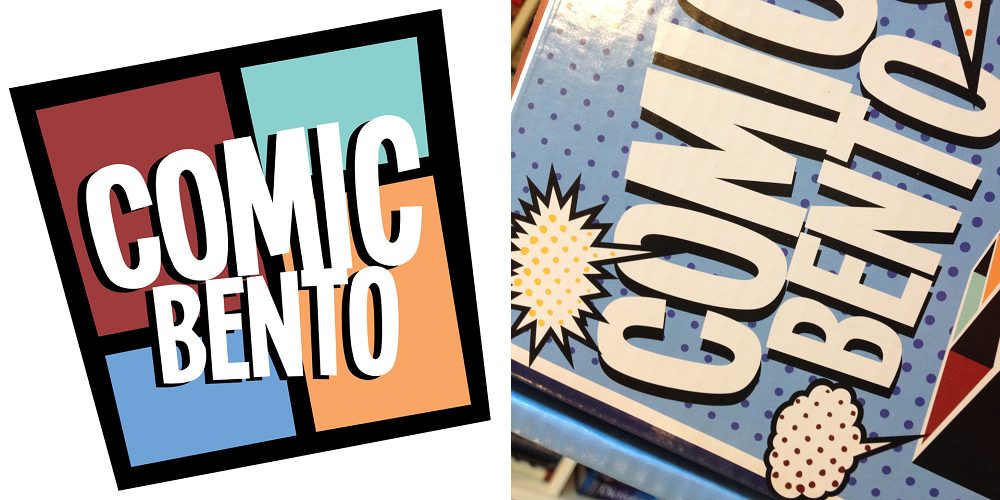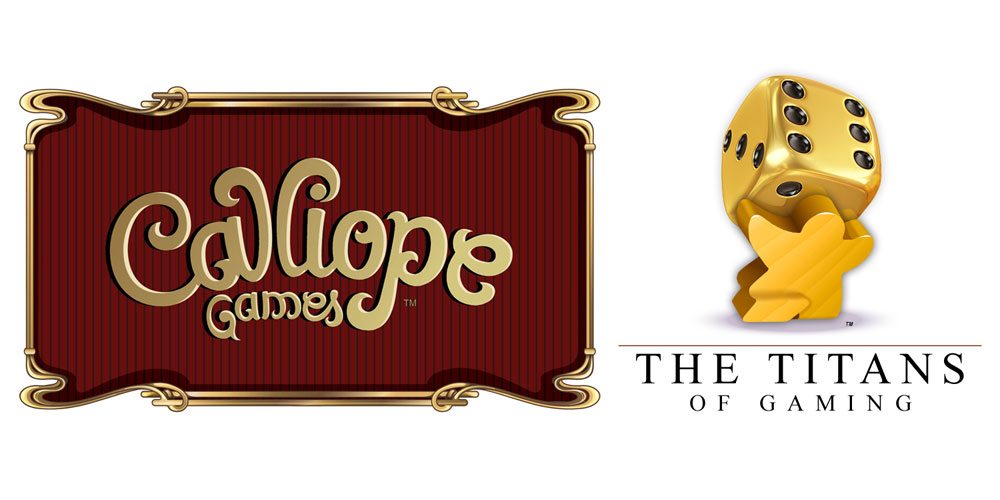Pick the best stars and arrange them to form a constellation. Will your stars Twinkle?
What Is Twinkle?
Twinkle is a dice-drafting game for 2 to 4 players, ages 8 and up, and takes about 15 minutes to play. It’s currently seeking funding on Kickstarter, with a pledge level of €30 (about $36 USD) for a copy of the game; there are additional tiers to get a second set of dice or extra add-ons like a leather dice tray or velvet dice bag. The gameplay itself is pretty easy to learn, but the decisions can be a little tricky; I played with my 7-year-old and she enjoyed it but has a harder time working out all the possibilities.
Twinkle was designed by Theo Karvounis and published by V-Games, with illustrations by George Vassos.
New to Kickstarter? Check out our crowdfunding primer.
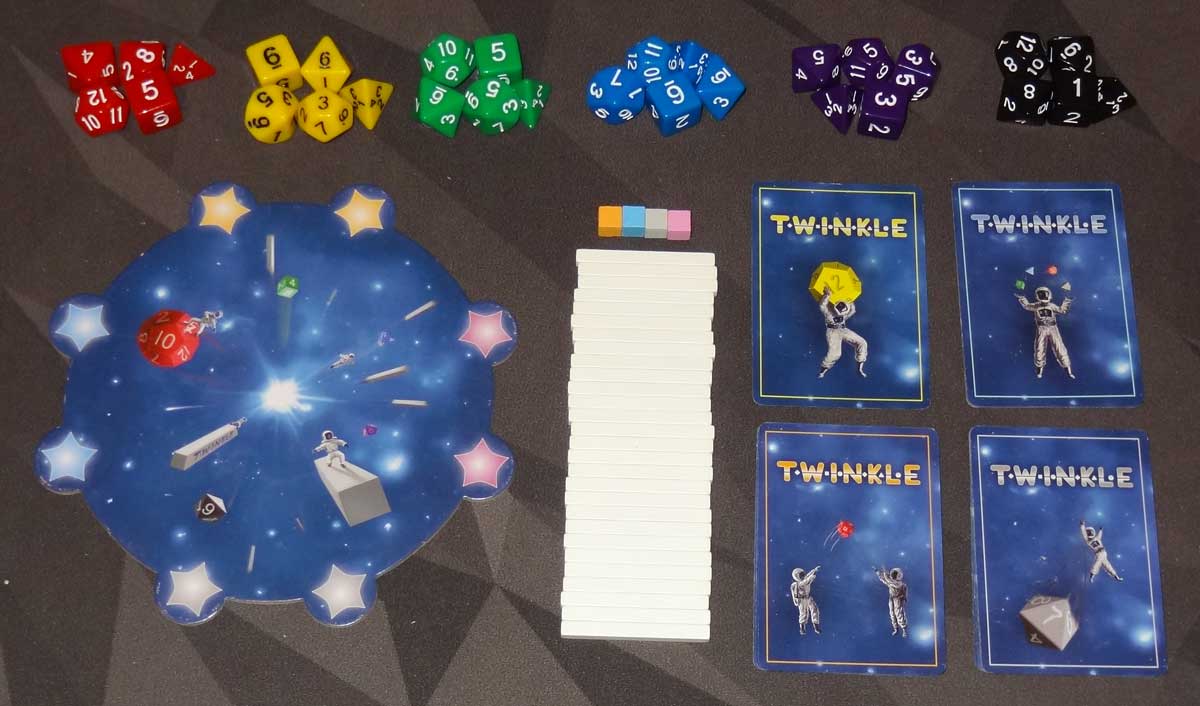
Twinkle Components
My review is based on a finished factory sample, so the components you see here should be close to what you get in the final version.
Here’s what comes in the game:
- 30 Polyhedral dice (a set of d4, d6, d8, d10, d12 each in 6 colors)
- Galaxy board
- 4 Scoring markers
- 28 Connectors
- 7 Scoring cards (Twinkle card, plus 1 scoring card per color)
- 20 Mission cards (10 silver, 10 bronze)

The galaxy board is round, with four pairs of stars protruding around the edge of the board (in four player colors). The center of the board has an illustration of a starfield with astronauts, giant dice, and the wooden beams that serve as connectors. The board is double-sided, with a scoring track on the back.
The dice are standard polyhedral dice in solid colors: red, yellow, green, blue, purple, and black. I’m not sure if the palette is color-blind friendly, though the game could use any sets of polyhedral dice as long as you know which scoring card goes with each set. Update: The first update to the Kickstarter campaign revealed that the dice in the Kickstarter edition will be sparkly transparent dice, which adds to the star theme and are a bit more attractive than the solid-colored dice (though they may suffer a little from legibility).
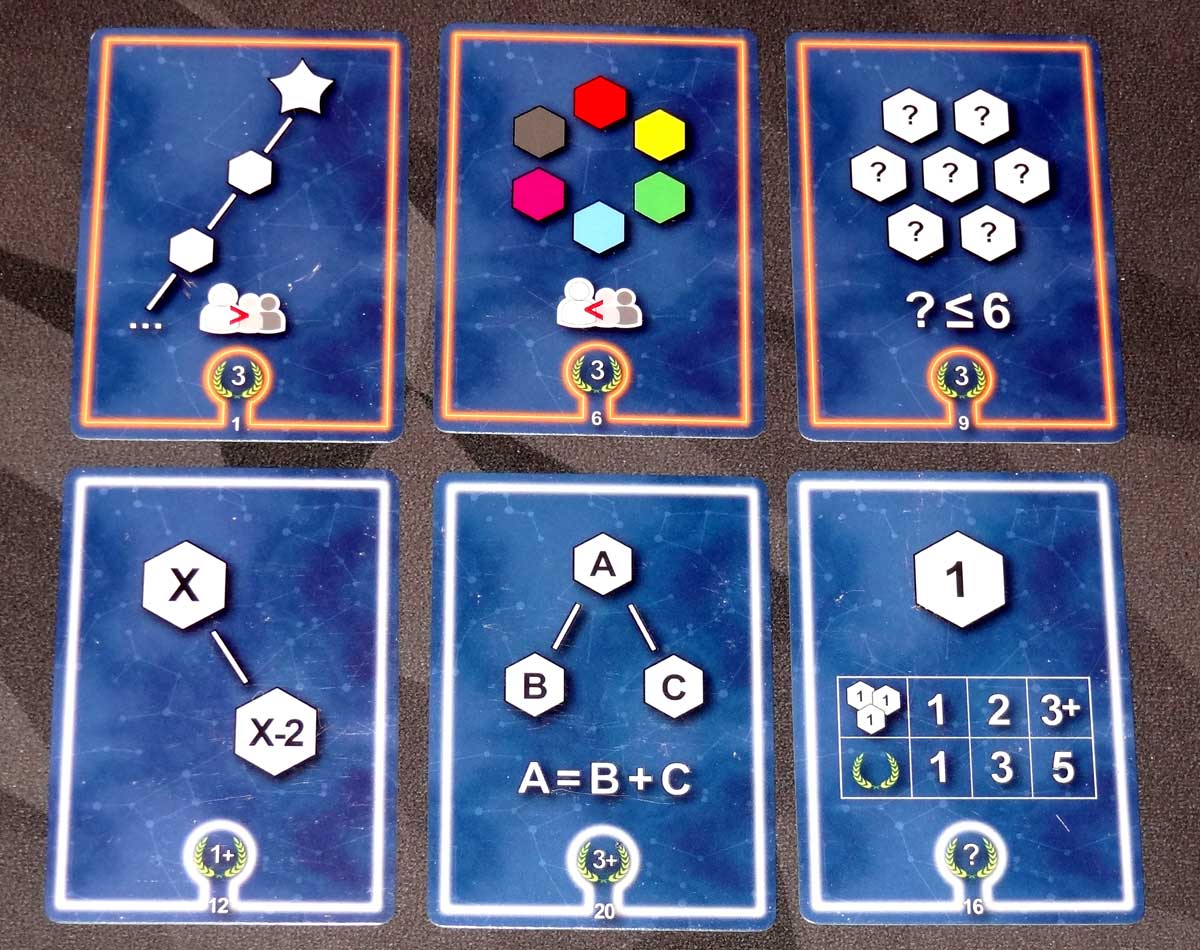
The scoring cards have some icons indicating how the various dice colors score. The iconography wasn’t immediately intuitive to me, but once I consulted the rulebook for the explanations and learned what each card meant, they made sense and I don’t have to refer to the rules anymore. Along the bottom there’s icons of the set of dice of that color, but I don’t know that it really adds much information, and probably could have been omitted. The mission cards also have various icons showing scoring conditions; at the bottom there’s a point value as well as a card number, so that you can easily look up the card explanation in the rulebook. I imagine I’ll probably need to keep referring to the rulebook for these, though. The nice thing is that it makes the cards themselves language-independent, so then only the rulebook needs to be in different languages.

The connectors are simple white wooden bars, and the scoring markers are wooden cubes. The box is pretty compact and has a plastic insert that holds everything pretty well without the need for plastic bags (except maybe the scoring markers).
How to Play Twinkle
You can download a draft of the rulebook here. It’s also free to try on Tabletopia, though it does not appear to have the mission cards for advanced play.
The Goal
The goal of the game is to score the most points by adding stars to your constellation.
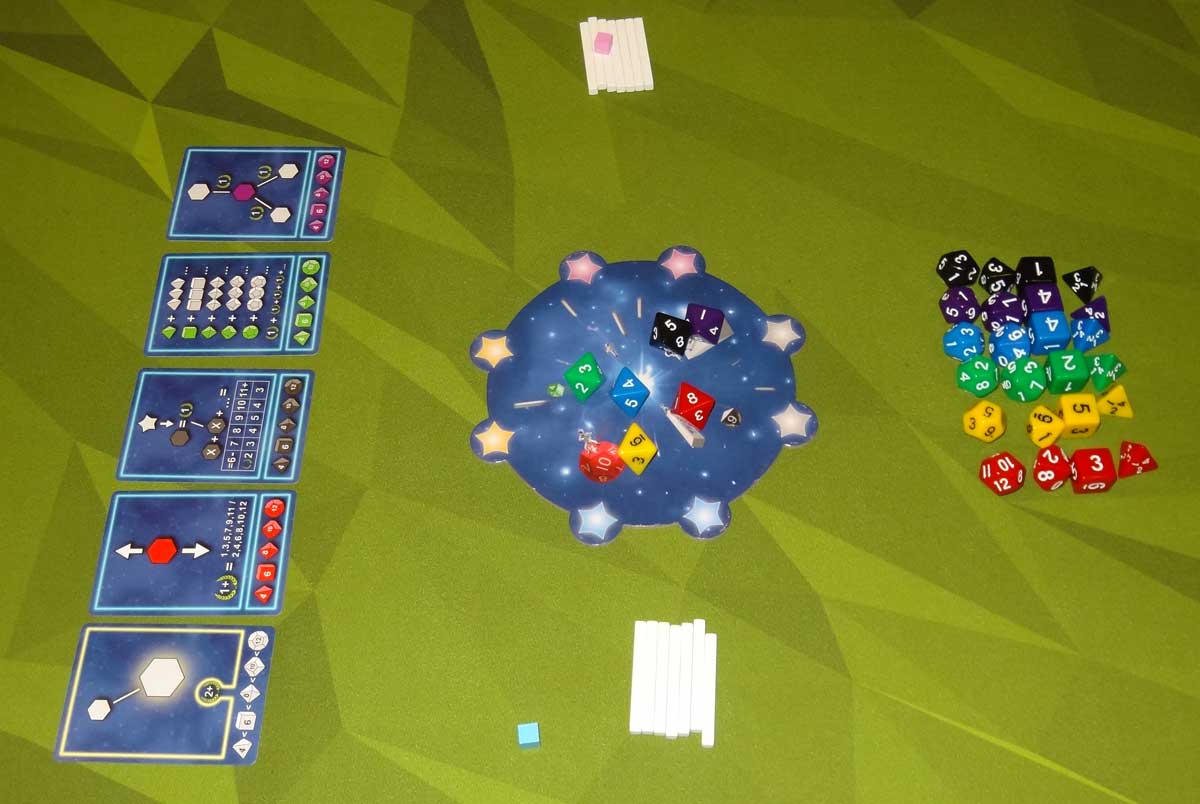
Setup
Place the game board (galaxy side up) in the center of the table so that each player faces a pair of stars. Give each player the corresponding scoring marker and 7 connectors. Roll all of the d8s and place them on the galaxy board. Set the other dice in a supply nearby (leaving room for the constellations extending outward from the galaxy board). Place the scoring cards face-up nearby: you always use the Twinkle scoring card, and then 4/5/6 of the color scoring cards for 2/3/4 players.
For experienced players, you also add mission cards face-up:
- Bronze Level: 1 bronze mission.
- Silver Level: 2 silver missions.
- Diamond Level: 1 bronze and 2 silver missions.
The player who most recently saw a shooting star goes first.
Gameplay
On your turn, you will take one die and add it to your constellation. There are two ways to take a die:
- Choose a d8 from the galaxy board and use it without changing the value.
- Choose any 3 dice (from the supply or the galaxy board), roll them, and choose one to use. Place any d8s back onto the board with their new values, and all other dice back into the supply.
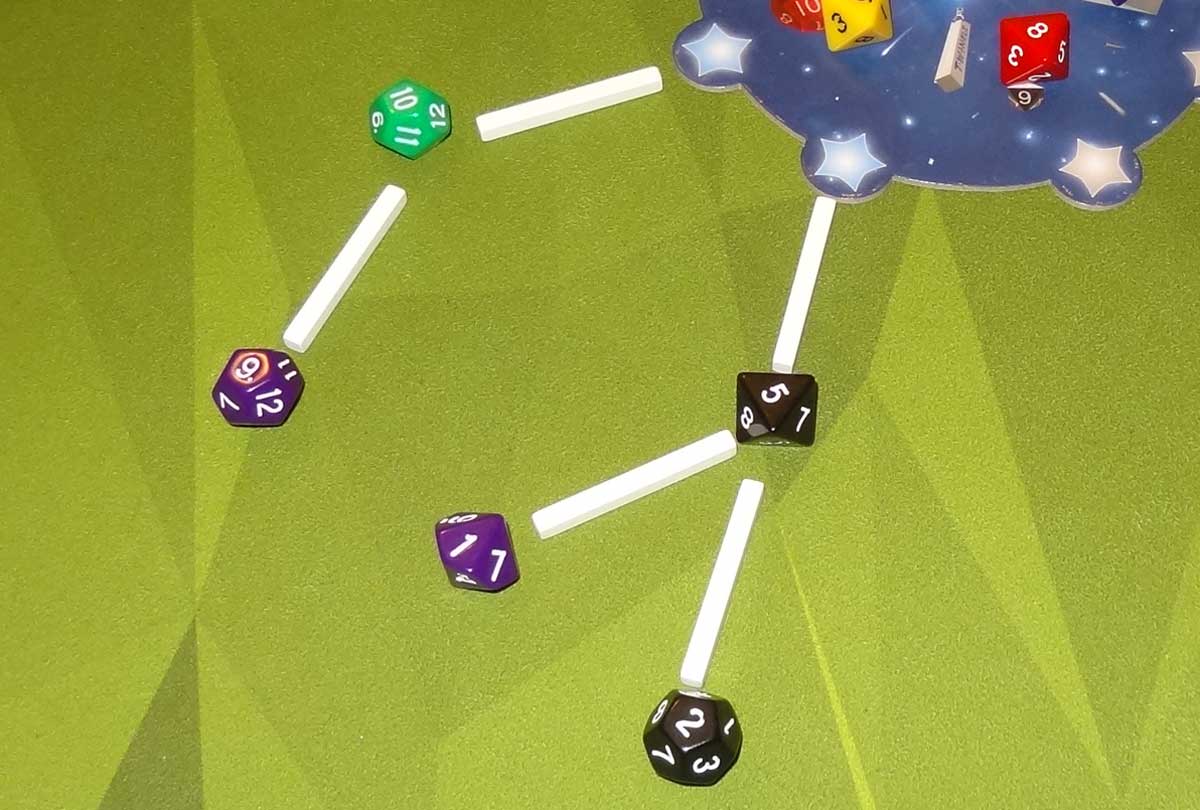
When you add a die to your constellation, you may connect it to either of your starting stars, or to another die in your constellation. The value of the new die must be strictly lower than the die you attach it to. (Any value may be attached to the starting stars.) Each star and each die may have two dice attached below them, so you can make branching “trees.”
You must take a die if you are able to. If you’re unable to place a die, you pass the turn to the next player, but will continue to play in future turns as usual.
Game End
The game ends when everyone has placed 7 dice in their constellations (using up their connectors) or is unable to place any more dice (because all of their lowest dice have a “1” value). Now it’s time to score! Flip the galaxy board over to reveal the scoring track.

Each of the color scoring cards has a different way to score dice of that color. For instance, yellow dice will score points based on how many you have total, regardless of their value or where they are in your constellation. Green dice give you points for having more dice of the same shape. Black dice score based on the sum of their values, but if you exceed the target the point value starts decreasing again.
The Twinkle scoring card (which is always used) gives you 2 points every time you attach a die with more sides than the previous one: for instance, if you attach a d12 to a d6. (The value of the die still has to be lower in order to attach it.)
Mission cards, if used, also award points to every player that meets their requirements.
The highest score wins, with ties going to the player who took the later turn.
Why You Should Play Twinkle
Fun fact: V-Games is the tabletop games division of Verdes Innovations S.A., the company that makes the V-CUBE puzzle cubes, which go up to 9×9. They’re still fairly new publishers with one game so far, Spinning Maze (also themed as Daedalus’ Maze), and it’ll be interesting to see what types of games they produce next. It looks like they’ve got an eye for light games with a puzzle aspect to them.
Twinkle looks like a pretty simple game at first glance, but it gets kind of tricky and can make you think. Since most of the dice colors have their own scoring mechanism, you’re trying to figure out which color will help you maximize your score, while also taking a gamble on what number you’ll end up with. For instance, a single black die with a value of 9 is worth 5 points all by itself—but what are the odds you’ll roll that 9? If you roll lower, you could take it and try to make up the difference later. If you roll higher… is it still worth it to get some points? Another example: if you have a line that has several odds or several evens, then a red die would be a great addition to it—but you’ll have to roll low enough to be able to add it. Or, you could start with a high red die at the top of a line, but then you’re limited in what values you will want to add to that line.
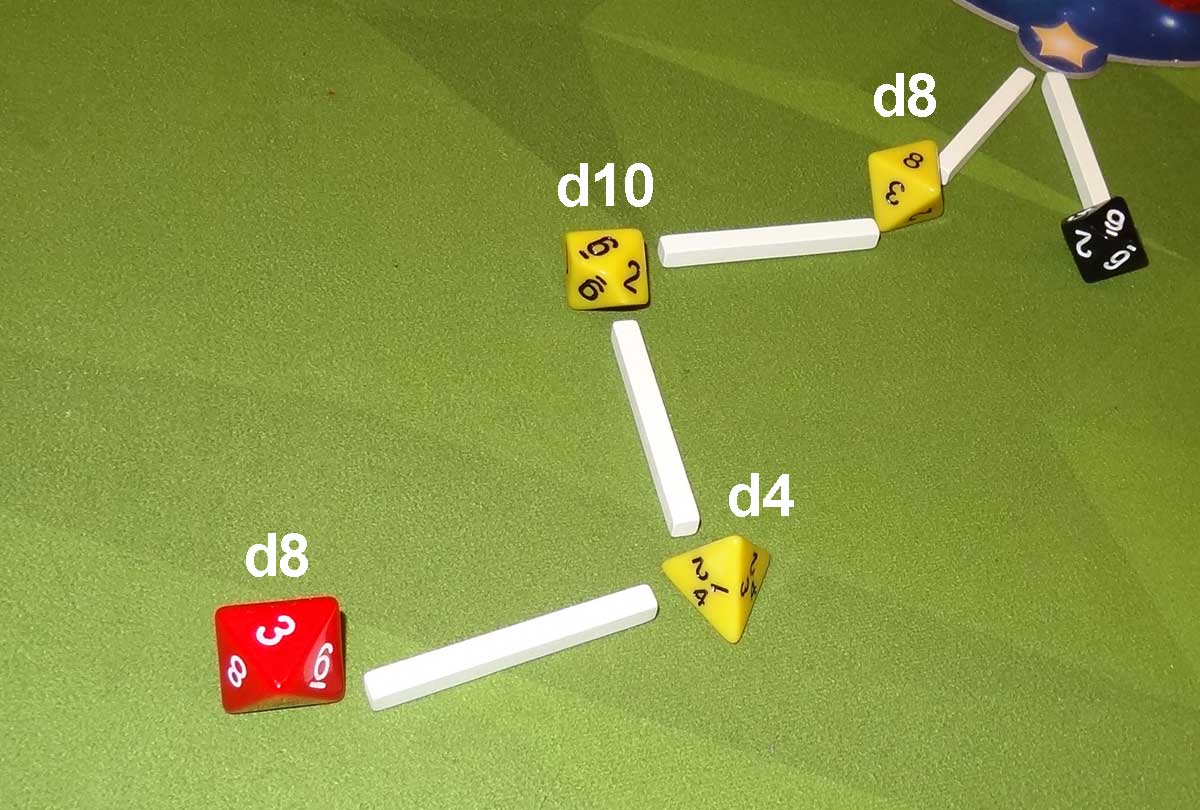
All of this is complicated by the fact that the Twinkle bonus encourages you to place the fewer-sided dice earlier in your line, so that you can add larger dice to them later, which works against the “every die has to be a lower value” rule. If you start a line with a d4, then you’re only going to be able to add three more dice to that line at most, even if the d4 is a 4. Start with too small a die, and you might be cutting off all of your options before you place all 7 of your stars. The Twinkle bonus encourages you to take risks, picking smaller dice to place early on or larger dice to place later, in the hopes that you’ll roll what you need.
That’s before you even get to the mission cards, which aren’t based on a specific die color but the relationships between dice in your constellations. Can you maximize the color scores, the Twinkle bonus, and still connect two dice with the same value to a single point? Or how about making sure that all of your dice in your entire constellation have values 6 or lower? Most of the point values in the game are pretty small—the scoring track only goes up to 30—but it takes a lot of small scoring opportunities to add up.
Of course, don’t forget about the value of hate-drafting! Because some of the dice scoring requires multiple dice of the same color or same shape, you can often tell what dice may benefit another player. You may have to decide: is it worth it to let them collect all the dice they need, so that you’re not competing with them for a limited resource? Or should you grab a couple of those dice, just to prevent them from getting the higher score too easily?
The fact that the d8s are in the center is just a little twist: those dice have known values that you can just take if it’s a good number, or you can take your chances and re-roll if you want. Sometimes it may be worth re-rolling a d8 you don’t want just to change its value for the other players. (See: hate-drafting, above.)
Even though the individual choices can be tricky to make, the game is still pretty short overall. If anything, it almost feels a little too short, especially in a 2-player game. You only use 7 connectors per player no matter what the player count is, but I’m considering trying a 2-player variant where we increase the number of connectors a little, because you do end up with so many unused dice at the end. By contrast, in a 4-player game, you’ll use all but 2 dice if everyone manages to get their full set of 7, and you may be more likely to paint yourself into a corner. On the other hand, being limited to 7 dice means that you have to choose very carefully, knowing that each die you take can only score so many points.

My only other complaint is that the “constellations” are all branching trees. You’re not making complex shapes since you’re limited to two branches at each node, and every line is the same length. I’ve done some zigzagging or spiraling just to add some flair, but most of the time you’ll end up with something that looks kind of like a spider with the game board as the body. The theme could easily have been something like building train tracks or a pipeline, though I suppose constellations may stand out a little in a hobby with lots and lots of train games.
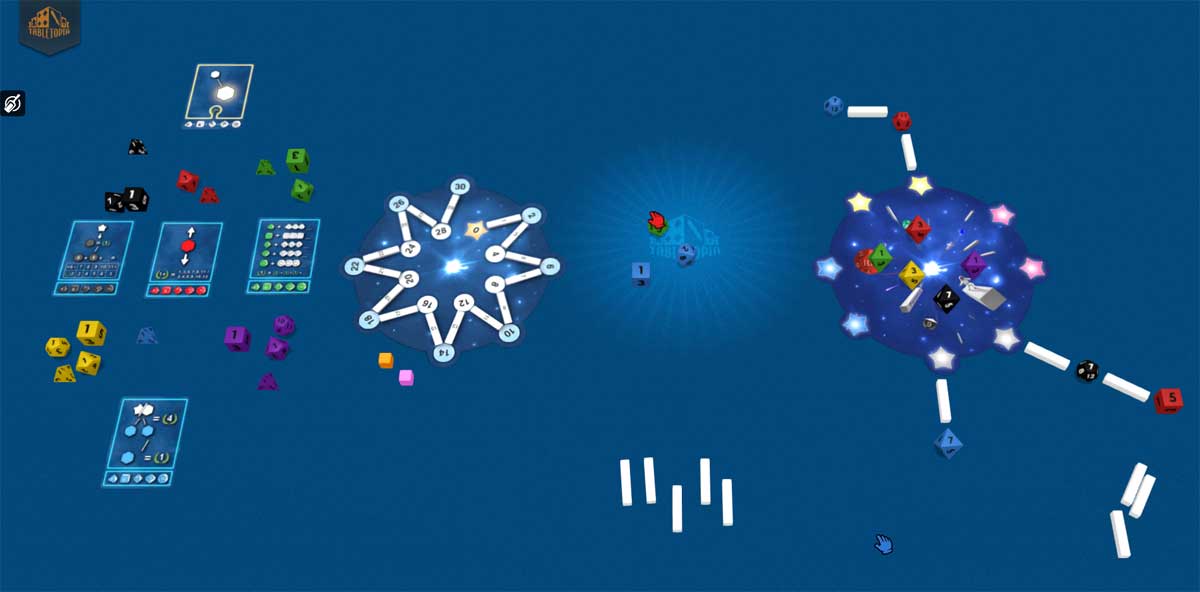
Overall, Twinkle is easy to learn, quick to play, and surprisingly mathy. I enjoyed playing it with my kids using the basic setup, and I could see it being very cutthroat against adult players with the mission cards thrown in. (Alas, due to the pandemic, I’ve only been able to play the basic setup remotely on Tabletopia so far, since it doesn’t include the mission cards.)
For more information or to make a pledge, visit the Twinkle Kickstarter page!
Click here to see all our tabletop game reviews.
![]() To subscribe to GeekDad’s tabletop gaming coverage, please copy this link and add it to your RSS reader.
To subscribe to GeekDad’s tabletop gaming coverage, please copy this link and add it to your RSS reader.
Disclosure: GeekDad received a copy of this game for review purposes.



